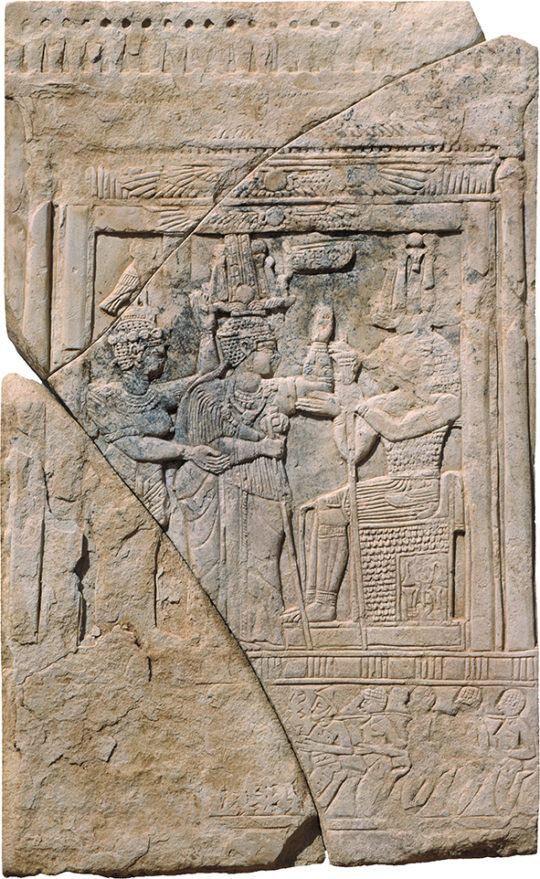Stela of Queen Amanishakheto
In a frame suggestive of a divine shrine sporting a uraeus frieze and a winged sun disk, the centre of the composition is occupied by the corpulent form of Queen Amanishakheto, standing between the lion-headed god Apedemak (right) and his wife, the goddess Amesemi (left), all in raised relief. The goddess bears her personal emblem, a falcon with the solar disk, on her head. Though it is now weathered on much of its surface, various iconographical details, such as the fine pleats of the queen’s shawl and the feather pattern of Apedemak’s shirt, give an idea of the quality of this piece. The Queen’s name is written in Meroitic hieroglyphs just in front of her crown.
Below this main scene, a row of five bound prisoners is visible, which can be reconstructed in a mirrored fashion on the left side (looking right instead of left). The first man is unusual in that he wears a helmet, unlike the wiry-haired Nubians that follow. The short inscription before his face can be read as “white man”, suggesting a conflict with the Romans, something that is, in fact, documented for that time. The inscription in cursive Meroitic on the back of the stela names places that describe the full extent of this African kingdom, extending northwards right up to the border to Egypt at Aswan.
 © SMÄK, Leihgabe des Nationalmuseum Khartoum
© SMÄK, Leihgabe des Nationalmuseum Khartoum